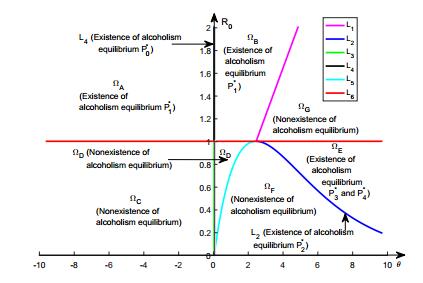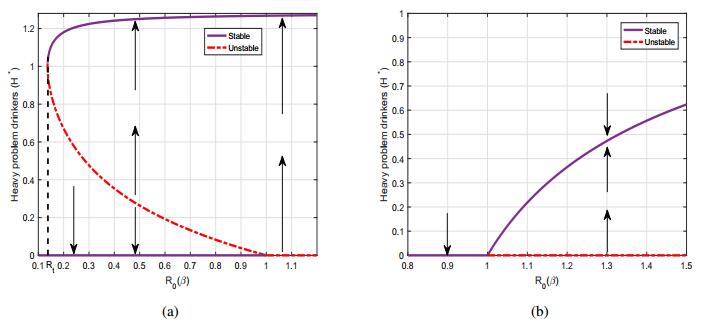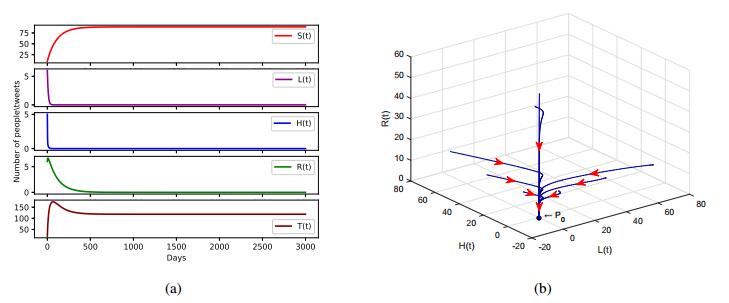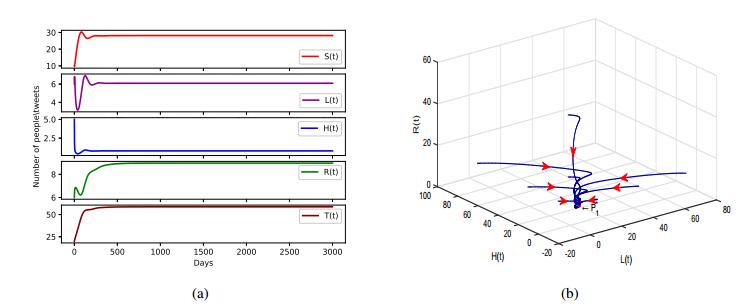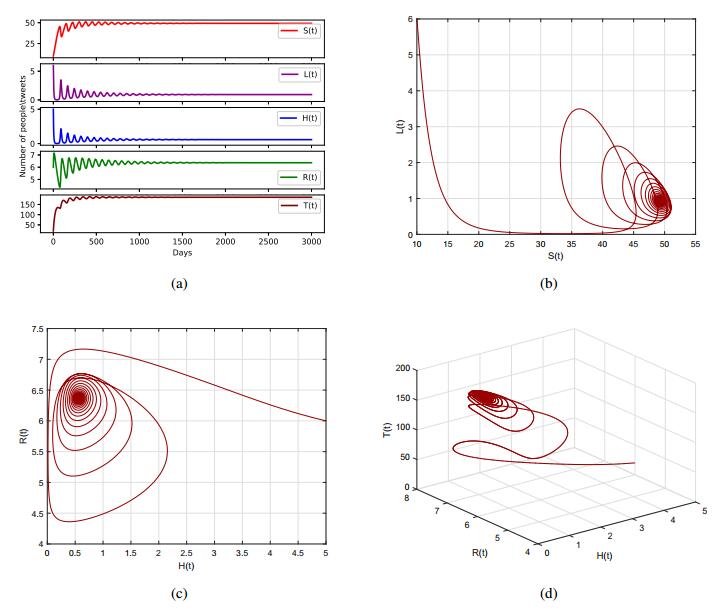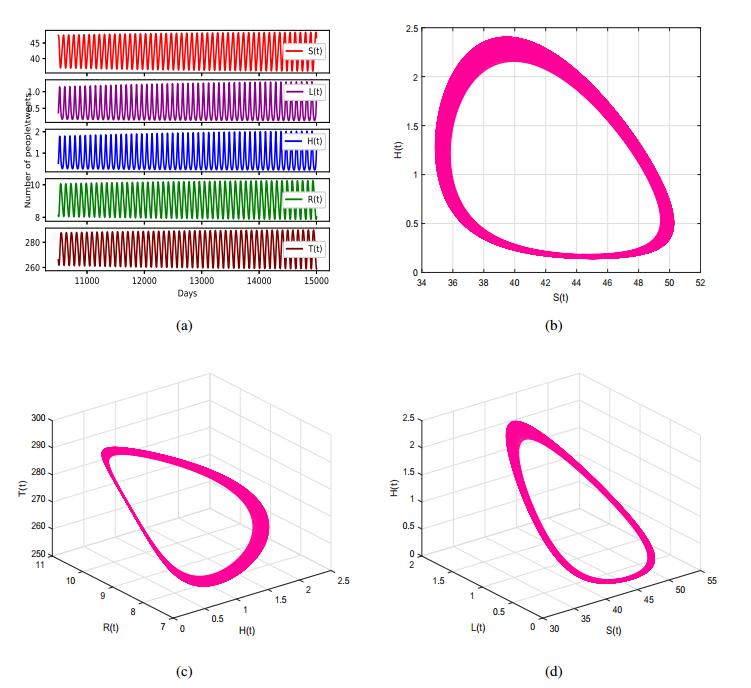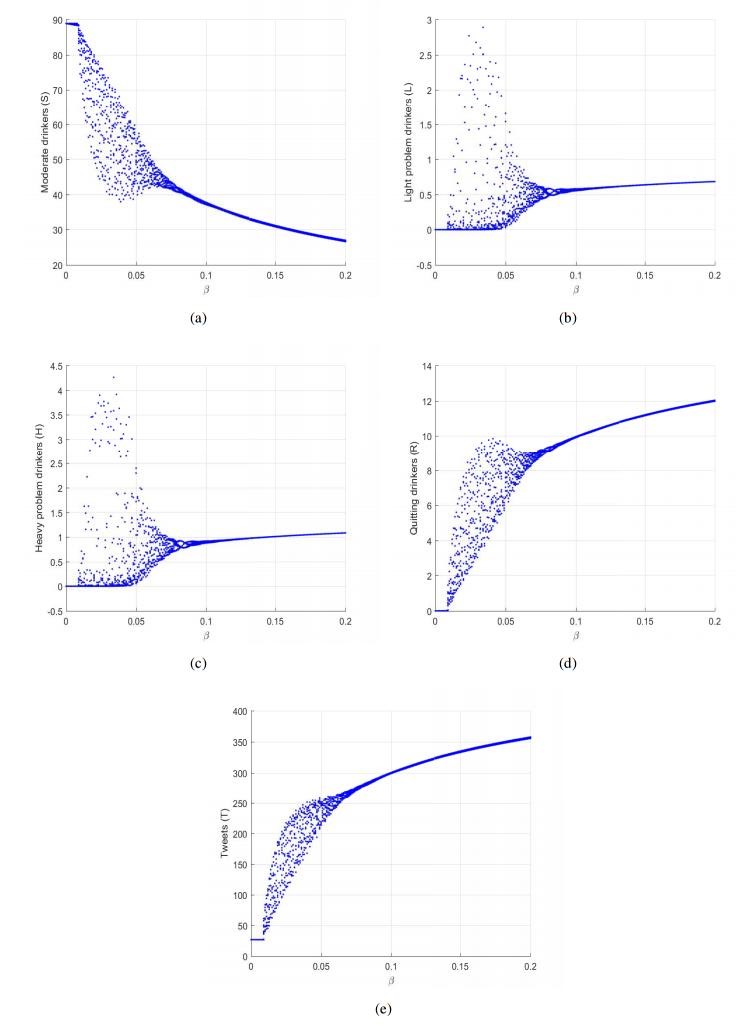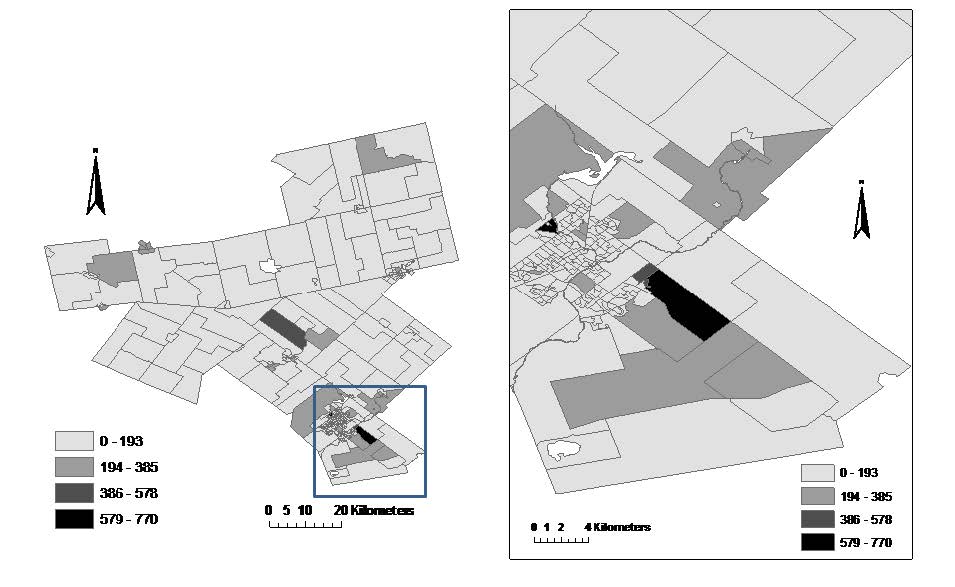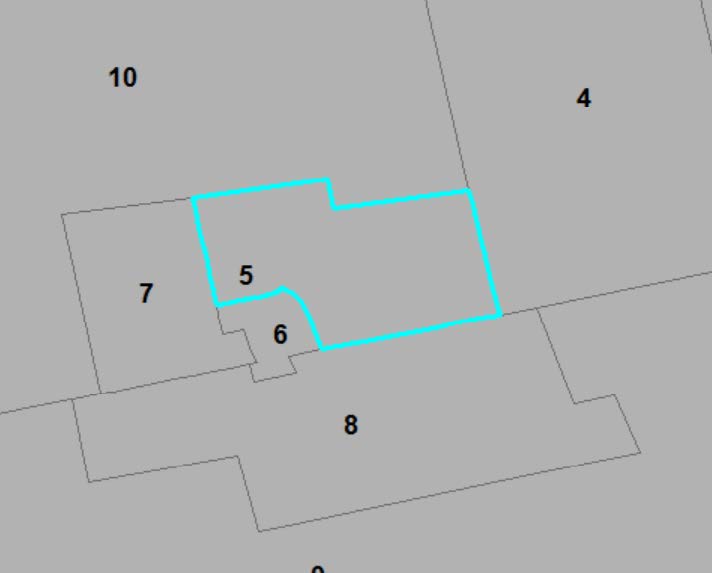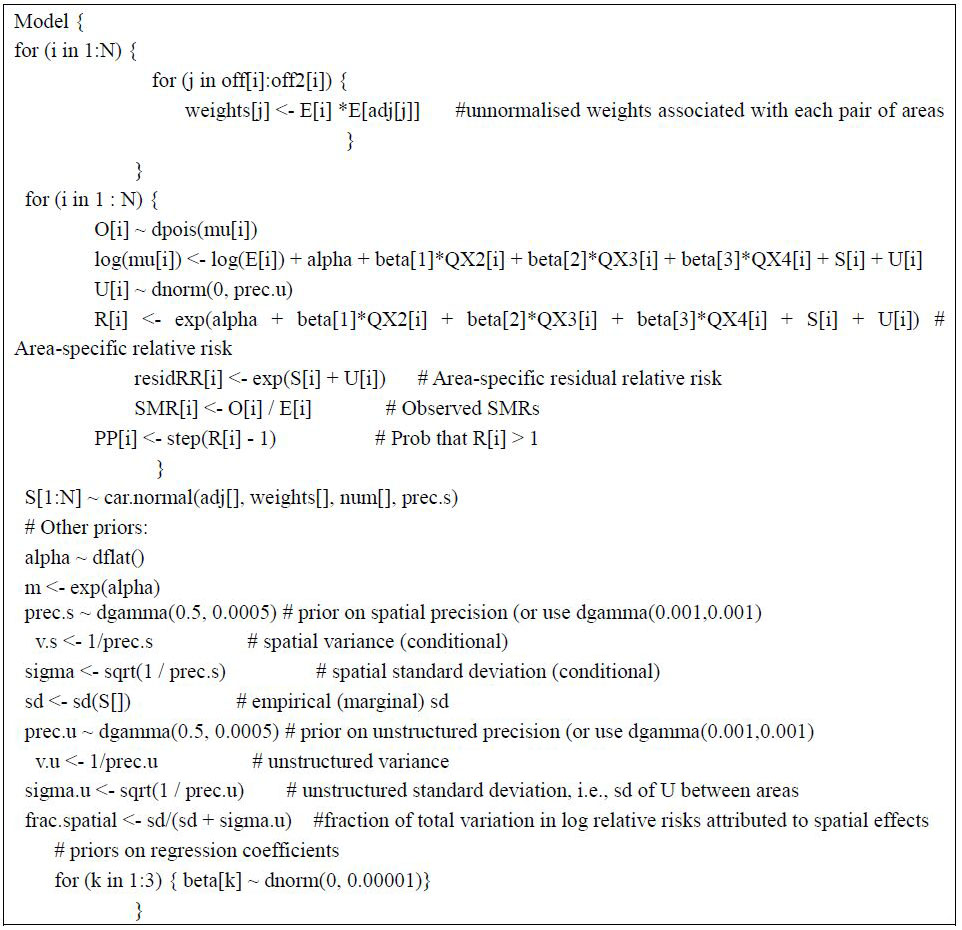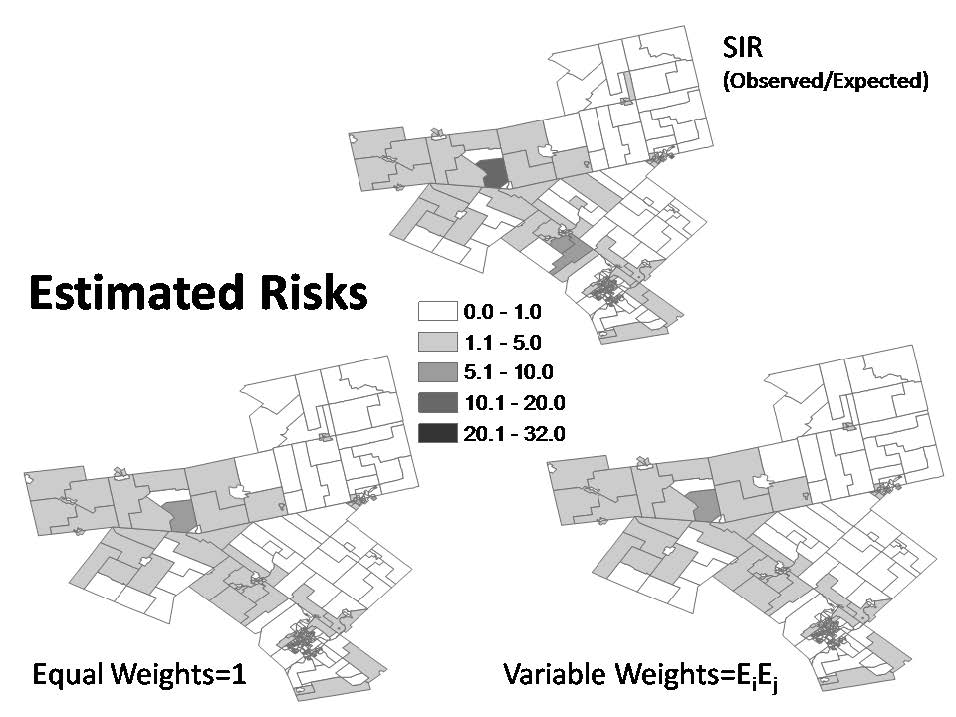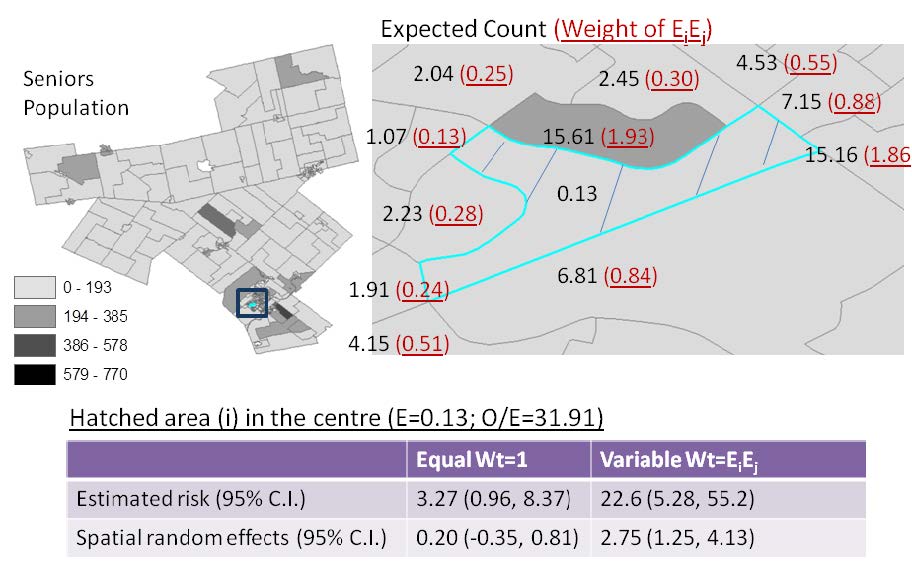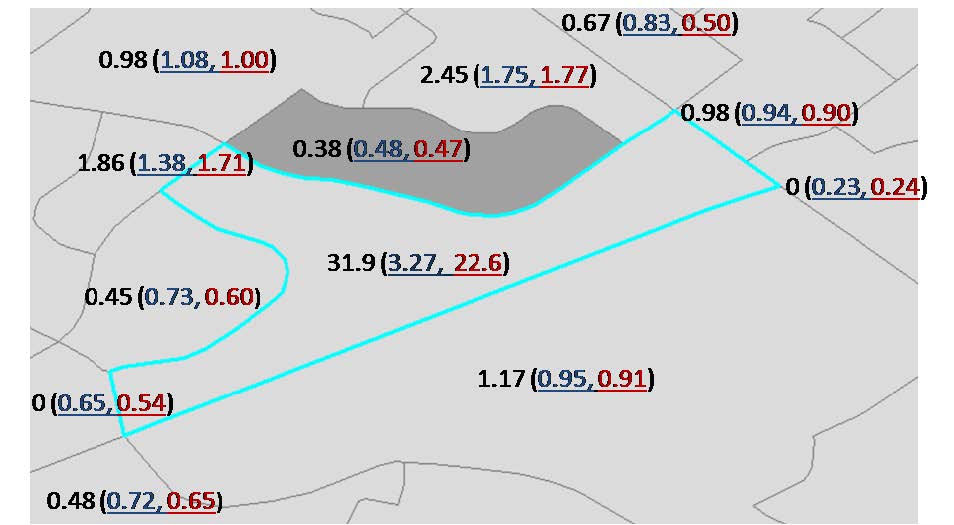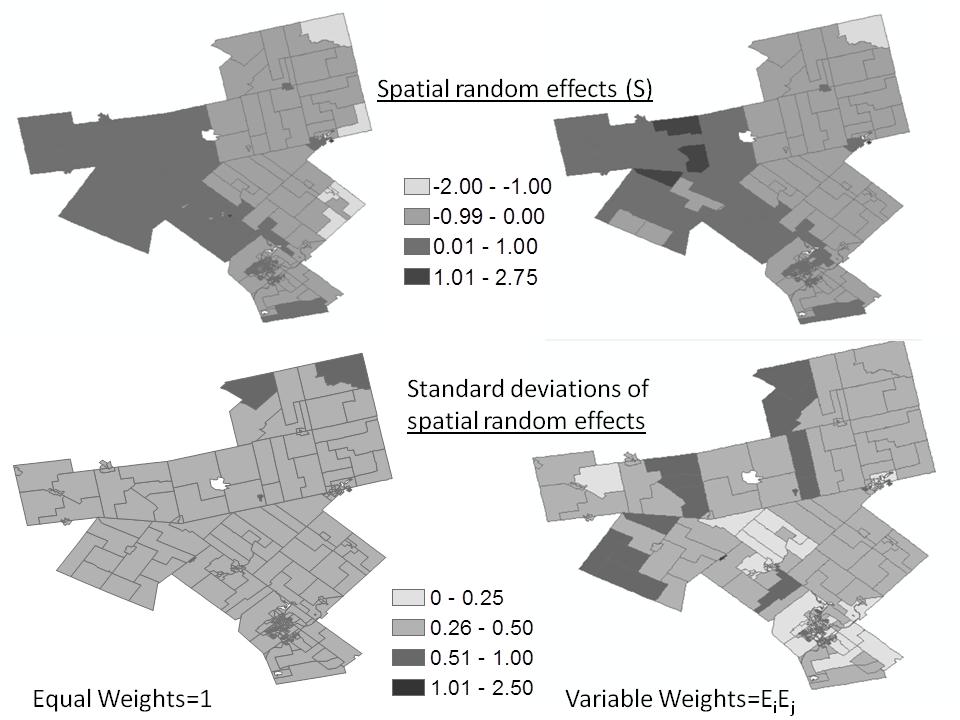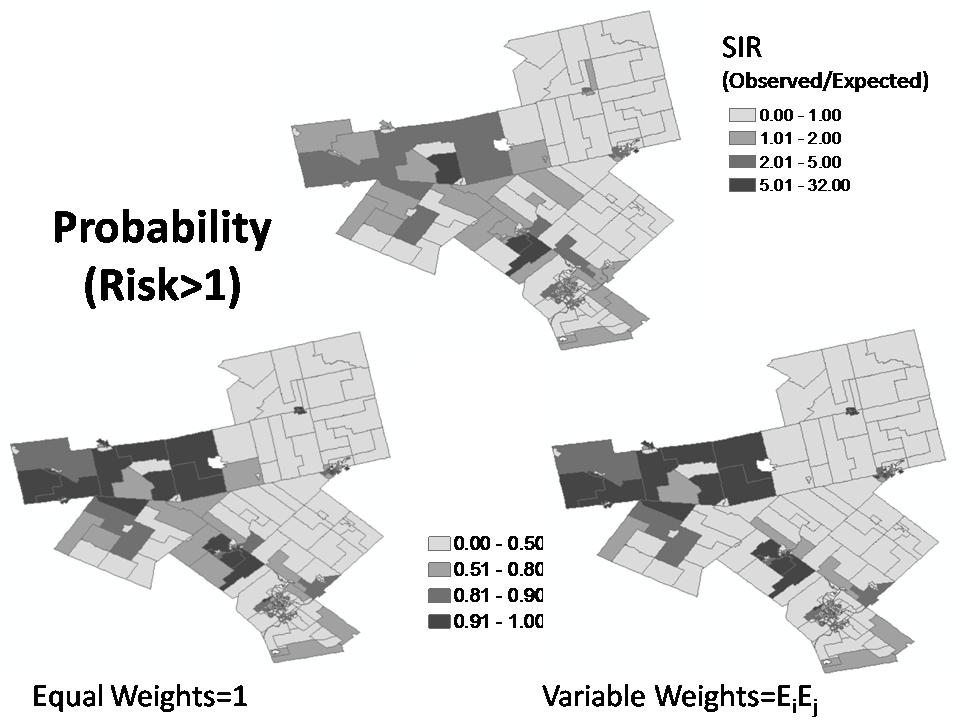|
$
\begin{eqnarray*}
f_{1}& = &7\, {{\Phi}}^2\, {{\alpha}_{1}}^4 + 12\, {{\Phi}}^2\, {{\alpha}_{1}}^3\, {\alpha}_{2} + 12\, {{\Phi}}^2\, {{\alpha}_{1}}^3\, {\gamma} + 12\, {{\Phi}}^2\, {{\alpha}_{1}}^3\, q + 12\, {{\Phi}}^2\, {{\alpha}_{1}}^3\, {\rho} + 18\, {{\Phi}}^2\, {{\alpha}_{1}}^3\, {\tau} + 6\, {{\Phi}}^2\, {{\alpha}_{1}}^2\, {{\alpha}_{2}}^2 \\
&&+ 12\, {{\Phi}}^2\, {{\alpha}_{1}}^2\, {\alpha}_{2}\, {\gamma} + 12\, {{\Phi}}^2\, {{\alpha}_{1}}^2\, {\alpha}_{2}\, q + 18\, {{\Phi}}^2\, {{\alpha}_{1}}^2\, {\alpha}_{2}\, {\rho} + 21\, {{\Phi}}^2\, {{\alpha}_{1}}^2\, {\alpha}_{2}\, {\tau} + 6\, {{\Phi}}^2\, {{\alpha}_{1}}^2\, {{\gamma}}^2 + 12\, {{\Phi}}^2\, {{\alpha}_{1}}^2\, {\gamma}\, q \\
&&+ 18\, {{\Phi}}^2\, {{\alpha}_{1}}^2\, {\gamma}\, {\rho}+ 21\, {{\Phi}}^2\, {{\alpha}_{1}}^2\, {\gamma}\, {\tau} + 6\, {{\Phi}}^2\, {{\alpha}_{1}}^2\, q^2 + 12\, {{\Phi}}^2\, {{\alpha}_{1}}^2\, q\, {\rho} + 21\, {{\Phi}}^2\, {{\alpha}_{1}}^2\, q\, {\tau} + 6\, {{\Phi}}^2\, {{\alpha}_{1}}^2\, {{\rho}}^2 \\
&&+ 21\, {{\Phi}}^2\, {{\alpha}_{1}}^2\, {\rho}\, {\tau} + 13\, {{\Phi}}^2\, {{\alpha}_{1}}^2\, {{\tau}}^2 + {{\Phi}}^2\, {\alpha}_{1}\, {{\alpha}_{2}}^3 + 3\, {{\Phi}}^2\, {\alpha}_{1}\, {{\alpha}_{2}}^2\, {\gamma} + 3\, {{\Phi}}^2\, {\alpha}_{1}\, {{\alpha}_{2}}^2\, q + 7\, {{\Phi}}^2\, {\alpha}_{1}\, {{\alpha}_{2}}^2\, {\rho} \\
&&+ 8\, {{\Phi}}^2\, {\alpha}_{1}\, {{\alpha}_{2}}^2\, {\tau} + 3\, {{\Phi}}^2\, {\alpha}_{1}\, {\alpha}_{2}\, {{\gamma}}^2 + 6\, {{\Phi}}^2\, {\alpha}_{1}\, {\alpha}_{2}\, {\gamma}\, q + 14\, {{\Phi}}^2\, {\alpha}_{1}\, {\alpha}_{2}\, {\gamma}\, {\rho} + 16\, {{\Phi}}^2\, {\alpha}_{1}\, {\alpha}_{2}\, {\gamma}\, {\tau} + 3\, {{\Phi}}^2\, {\alpha}_{1}\, {\alpha}_{2}\, q^2 \\
&&+ 10\, {{\Phi}}^2\, {\alpha}_{1}\, {\alpha}_{2}\, q\, {\rho} + 16\, {{\Phi}}^2\, {\alpha}_{1}\, {\alpha}_{2}\, q\, {\tau} + 7\, {{\Phi}}^2\, {\alpha}_{1}\, {\alpha}_{2}\, {{\rho}}^2 + 14\, {{\Phi}}^2\, {\alpha}_{1}\, {\alpha}_{2}\, {\rho}\, {\tau} + 10\, {{\Phi}}^2\, {\alpha}_{1}\, {\alpha}_{2}\, {{\tau}}^2+ {{\Phi}}^2\, {\alpha}_{1}\, {{\gamma}}^3 \\
&&+ 3\, {{\Phi}}^2\, {\alpha}_{1}\, {{\gamma}}^2\, q + 7\, {{\Phi}}^2\, {\alpha}_{1}\, {{\gamma}}^2\, {\rho} + 8\, {{\Phi}}^2\, {\alpha}_{1}\, {{\gamma}}^2\, {\tau} + 3\, {{\Phi}}^2\, {\alpha}_{1}\, {\gamma}\, q^2 + 10\, {{\Phi}}^2\, {\alpha}_{1}\, {\gamma}\, q\, {\rho} + 16\, {{\Phi}}^2\, {\alpha}_{1}\, {\gamma}\, q\, {\tau} \\
&&+ 14\, {{\Phi}}^2\, {\alpha}_{1}\, {\gamma}\, {\rho}\, {\tau} + 10\, {{\Phi}}^2\, {\alpha}_{1}\, {\gamma}\, {{\tau}}^2 + {{\Phi}}^2\, {\alpha}_{1}\, q^3 + 3\, {{\Phi}}^2\, {\alpha}_{1}\, q^2\, {\rho} + 8\, {{\Phi}}^2\, {\alpha}_{1}\, q^2\, {\tau} + 3\, {{\Phi}}^2\, {\alpha}_{1}\, q\, {{\rho}}^2 \\
&&+ 10\, {{\Phi}}^2\, {\alpha}_{1}\, q\, {{\tau}}^2 + {{\Phi}}^2\, {\alpha}_{1}\, {{\rho}}^3 + 8\, {{\Phi}}^2\, {\alpha}_{1}\, {{\rho}}^2\, {\tau} + 10\, {{\Phi}}^2\, {\alpha}_{1}\, {\rho}\, {{\tau}}^2 + 2\, {{\Phi}}^2\, {\alpha}_{1}\, {{\tau}}^3 + {{\Phi}}^2\, {{\alpha}_{2}}^3\, {\rho} + {{\Phi}}^2\, {{\alpha}_{2}}^3\, {\tau} \\
&&+ 3\, {{\Phi}}^2\, {{\alpha}_{2}}^2\, {\gamma}\, {\tau} + 2\, {{\Phi}}^2\, {{\alpha}_{2}}^2\, q\, {\rho} + 3\, {{\Phi}}^2\, {{\alpha}_{2}}^2\, q\, {\tau} + {{\Phi}}^2\, {{\alpha}_{2}}^2\, {{\rho}}^2 + 2\, {{\Phi}}^2\, {{\alpha}_{2}}^2\, {\rho}\, {\tau} + 2\, {{\Phi}}^2\, {{\alpha}_{2}}^2\, {{\tau}}^2 + 3\, {{\Phi}}^2\, {\alpha}_{2}\, {{\gamma}}^2\, {\rho} \\
&&+ 3\, {{\Phi}}^2\, {\alpha}_{2}\, {{\gamma}}^2\, {\tau} + 4\, {{\Phi}}^2\, {\alpha}_{2}\, {\gamma}\, q\, {\rho} + 6\, {{\Phi}}^2\, {\alpha}_{2}\, {\gamma}\, q\, {\tau} + 2\, {{\Phi}}^2\, {\alpha}_{2}\, {\gamma}\, {{\rho}}^2 + 4\, {{\Phi}}^2\, {\alpha}_{2}\, {\gamma}\, {\rho}\, {\tau} + 4\, {{\Phi}}^2\, {\alpha}_{2}\, {\gamma}\, {{\tau}}^2 \\
&&+ 3\, {{\Phi}}^2\, {\alpha}_{2}\, q^2\, {\tau} + 2\, {{\Phi}}^2\, {\alpha}_{2}\, q\, {{\rho}}^2 + 3\, {{\Phi}}^2\, {\alpha}_{2}\, q\, {\rho}\, {\tau} + 4\, {{\Phi}}^2\, {\alpha}_{2}\, q\, {{\tau}}^2 + {{\Phi}}^2\, {\alpha}_{2}\, {{\rho}}^3 + 2\, {{\Phi}}^2\, {\alpha}_{2}\, {{\rho}}^2\, {\tau} + 3\, {{\Phi}}^2\, {\alpha}_{2}\, {\rho}\, {{\tau}}^2 \\
&& +{{\Phi}}^2\, {\alpha}_{2}\, {{\tau}}^3 + {{\Phi}}^2\, {{\gamma}}^3\, {\rho} + {{\Phi}}^2\, {{\gamma}}^3\, {\tau} + 2\, {{\Phi}}^2\, {{\gamma}}^2\, q\, {\rho} + 3\, {{\Phi}}^2\, {{\gamma}}^2\, q\, {\tau} + {{\Phi}}^2\, {{\gamma}}^2\, {{\rho}}^2 + 2\, {{\Phi}}^2\, {{\gamma}}^2\, {\rho}\, {\tau} + 2\, {{\Phi}}^2\, {{\gamma}}^2\, {{\tau}}^2\\
&& + {{\Phi}}^2\, {\gamma}\, q^2\, {\rho} + 3\, {{\Phi}}^2\, {\gamma}\, q^2\, {\tau} + 2\, {{\Phi}}^2\, {\gamma}\, q\, {{\rho}}^2 + 3\, {{\Phi}}^2\, {\gamma}\, q\, {\rho}\, {\tau} + 4\, {{\Phi}}^2\, {\gamma}\, q\, {{\tau}}^2 + {{\Phi}}^2\, {\gamma}\, {{\rho}}^3 + 2\, {{\Phi}}^2\, {\gamma}\, {{\rho}}^2\, {\tau} \\
&&+ 3\, {{\Phi}}^2\, {\gamma}\, {\rho}\, {{\tau}}^2 + {{\Phi}}^2\, {\gamma}\, {{\tau}}^3 + {{\Phi}}^2\, q^3\, {\tau} + {{\Phi}}^2\, q^2\, {\rho}\, {\tau} + 2\, {{\Phi}}^2\, q^2\, {{\tau}}^2 + {{\Phi}}^2\, q\, {{\rho}}^2\, {\tau} + 2\, {{\Phi}}^2\, q\, {\rho}\, {{\tau}}^2 + {{\Phi}}^2\, q\, {{\tau}}^3 \\
&&+ {{\Phi}}^2\, {{\rho}}^3\, {\tau} + 2\, {{\Phi}}^2\, {{\rho}}^2\, {{\tau}}^2 + {{\Phi}}^2\, {\rho}\, {{\tau}}^3 + 6\, {\alpha}\, {\Phi}\, {{\alpha}_{1}}^3\, {\alpha}_{2}\, {\rho} + 8\, {\alpha}\, {\Phi}\, {{\alpha}_{1}}^2\, {{\alpha}_{2}}^2\, {\rho} + 8\, {\alpha}\, {\Phi}\, {{\alpha}_{1}}^2\, {\alpha}_{2}\, {\gamma}\, {\rho}\\
&& + 8\, {\alpha}\, {\Phi}\, {{\alpha}_{1}}^2\, {\alpha}_{2}\, q\, {\rho} + 8\, {\alpha}\, {\Phi}\, {{\alpha}_{1}}^2\, {\alpha}_{2}\, {{\rho}}^2 + 2\, {\alpha}\, {\Phi}\, {{\alpha}_{1}}^2\, {\alpha}_{2}\, {\rho}\, {\tau} + 2\, {\alpha}\, {\Phi}\, {\alpha}_{1}\, {{\alpha}_{2}}^3\, {\rho} + 4\, {\alpha}\, {\Phi}\, {\alpha}_{1}\, {{\alpha}_{2}}^2\, {\gamma}\, {\rho} \\
&&+ 4\, {\alpha}\, {\Phi}\, {\alpha}_{1}\, {{\alpha}_{2}}^2\, q\, {\rho} + 10\, {\alpha}\, {\Phi}\, {\alpha}_{1}\, {{\alpha}_{2}}^2\, {{\rho}}^2 + 2\, {\alpha}\, {\Phi}\, {\alpha}_{1}\, {{\alpha}_{2}}^2\, {\rho}\, {\tau} + 2\, {\alpha}\, {\Phi}\, {\alpha}_{1}\, {\alpha}_{2}\, {{\gamma}}^2\, {\rho} + 4\, {\alpha}\, {\Phi}\, {\alpha}_{1}\, {\alpha}_{2}\, {\gamma}\, q\, {\rho} \\
&&+ 10\, {\alpha}\, {\Phi}\, {\alpha}_{1}\, {\alpha}_{2}\, {\gamma}\, {{\rho}}^2 + 2\, {\alpha}\, {\Phi}\, {\alpha}_{1}\, {\alpha}_{2}\, {\gamma}\, {\rho}\, {\tau} + 2\, {\alpha}\, {\Phi}\, {\alpha}_{1}\, {\alpha}_{2}\, q^2\, {\rho} + 10\, {\alpha}\, {\Phi}\, {\alpha}_{1}\, {\alpha}_{2}\, q\, {{\rho}}^2 + 2\, {\alpha}\, {\Phi}\, {\alpha}_{1}\, {\alpha}_{2}\, q\, {\rho}\, {\tau} \\
&&+ 2\, {\alpha}\, {\Phi}\, {\alpha}_{1}\, {\alpha}_{2}\, {{\rho}}^3 + 2\, {\alpha}\, {\Phi}\, {\alpha}_{1}\, {\alpha}_{2}\, {{\rho}}^2\, {\tau} + 2\, {\alpha}\, {\Phi}\, {{\alpha}_{2}}^3\, {{\rho}}^2 + 4\, {\alpha}\, {\Phi}\, {{\alpha}_{2}}^2\, {\gamma}\, {{\rho}}^2 + 4\, {\alpha}\, {\Phi}\, {{\alpha}_{2}}^2\, q\, {{\rho}}^2 + 2\, {\alpha}\, {\Phi}\, {{\alpha}_{2}}^2\, {{\rho}}^3 \\
&&+ 2\, {\alpha}\, {\Phi}\, {{\alpha}_{2}}^2\, {{\rho}}^2\, {\tau} + 2\, {\alpha}\, {\Phi}\, {\alpha}_{2}\, {{\gamma}}^2\, {{\rho}}^2 + 4\, {\alpha}\, {\Phi}\, {\alpha}_{2}\, {\gamma}\, q\, {{\rho}}^2 + 2\, {\alpha}\, {\Phi}\, {\alpha}_{2}\, {\gamma}\, {{\rho}}^3 + 2\, {\alpha}\, {\Phi}\, {\alpha}_{2}\, {\gamma}\, {{\rho}}^2\, {\tau}+ {{\Phi}}^2\, {\alpha}_{2}\, q^2\, {\rho} \\
&&+ 2\, {\alpha}\, {\Phi}\, {\alpha}_{2}\, q^2\, {{\rho}}^2 + 2\, {\alpha}\, {\Phi}\, {\alpha}_{2}\, q\, {{\rho}}^3+ 2\, {\alpha}\, {\Phi}\, {\alpha}_{2}\, q\, {{\rho}}^2\, {\tau}+ 3\, {{\Phi}}^2\, {{\alpha}_{2}}^2\, {\gamma}\, {\rho}+ 7\, {{\Phi}}^2\, {\alpha}_{1}\, {\gamma}\, {{\rho}}^2+ 10\, {{\Phi}}^2\, {\alpha}_{1}\, q\, {\rho}\, {\tau}, \\
f_{2}& = &6\, {\Phi}\, {{\alpha}_{1}}^5 + 9\, {\alpha}\, {{\alpha}_{1}}^4\, {\alpha}_{2}\, {\rho} + 11\, {\Phi}\, {{\alpha}_{1}}^4\, {\alpha}_{2} + 11\, {\Phi}\, {{\alpha}_{1}}^4\, {\gamma} + 11\, {\Phi}\, {{\alpha}_{1}}^4\, q + 11\, {\Phi}\, {{\alpha}_{1}}^4\, {\rho} + 26\, {\Phi}\, {{\alpha}_{1}}^4\, {\tau} \\
&&+ 15\, {\alpha}\, {{\alpha}_{1}}^3\, {{\alpha}_{2}}^2\, {\rho} + 6\, {\Phi}\, {{\alpha}_{1}}^3\, {{\alpha}_{2}}^2 + 15\, {\alpha}\, {{\alpha}_{1}}^3\, {\alpha}_{2}\, {\gamma}\, {\rho} + 12\, {\Phi}\, {{\alpha}_{1}}^3\, {\alpha}_{2}\, {\gamma} + 15\, {\alpha}\, {{\alpha}_{1}}^3\, {\alpha}_{2}\, q\, {\rho} \\
&&+ 15\, {\alpha}\, {{\alpha}_{1}}^3\, {\alpha}_{2}\, {{\rho}}^2 + 6\, {\alpha}\, {{\alpha}_{1}}^3\, {\alpha}_{2}\, {\rho}\, {\tau} + 18\, {\Phi}\, {{\alpha}_{1}}^3\, {\alpha}_{2}\, {\rho} + 33\, {\Phi}\, {{\alpha}_{1}}^3\, {\alpha}_{2}\, {\tau} + 6\, {\Phi}\, {{\alpha}_{1}}^3\, {{\gamma}}^2 + 12\, {\Phi}\, {{\alpha}_{1}}^3\, {\gamma}\, q \\
&&+ 18\, {\Phi}\, {{\alpha}_{1}}^3\, {\gamma}\, {\rho} + 33\, {\Phi}\, {{\alpha}_{1}}^3\, {\gamma}\, {\tau} + 6\, {\Phi}\, {{\alpha}_{1}}^3\, q^2 + 12\, {\Phi}\, {{\alpha}_{1}}^3\, q\, {\rho} + 33\, {\Phi}\, {{\alpha}_{1}}^3\, q\, {\tau} + 6\, {\Phi}\, {{\alpha}_{1}}^3\, {{\rho}}^2 \\
&&+ 27\, {\Phi}\, {{\alpha}_{1}}^3\, {{\tau}}^2 + 7\, {\alpha}\, {{\alpha}_{1}}^2\, {{\alpha}_{2}}^3\, {\rho} + {\Phi}\, {{\alpha}_{1}}^2\, {{\alpha}_{2}}^3 + 14\, {\alpha}\, {{\alpha}_{1}}^2\, {{\alpha}_{2}}^2\, {\gamma}\, {\rho} + 3\, {\Phi}\, {{\alpha}_{1}}^2\, {{\alpha}_{2}}^2\, {\gamma} + 14\, {\alpha}\, {{\alpha}_{1}}^2\, {{\alpha}_{2}}^2\, q\, {\rho}\\
&& + 3\, {\Phi}\, {{\alpha}_{1}}^2\, {{\alpha}_{2}}^2\, q + 23\, {\alpha}\, {{\alpha}_{1}}^2\, {{\alpha}_{2}}^2\, {{\rho}}^2 + 8\, {\alpha}\, {{\alpha}_{1}}^2\, {{\alpha}_{2}}^2\, {\rho}\, {\tau} + 8\, {\Phi}\, {{\alpha}_{1}}^2\, {{\alpha}_{2}}^2\, {\rho} + 14\, {\Phi}\, {{\alpha}_{1}}^2\, {{\alpha}_{2}}^2\, {\tau} \\
&&+ 3\, {\Phi}\, {{\alpha}_{1}}^2\, {\alpha}_{2}\, {{\gamma}}^2 + 14\, {\alpha}\, {{\alpha}_{1}}^2\, {\alpha}_{2}\, {\gamma}\, q\, {\rho} + 6\, {\Phi}\, {{\alpha}_{1}}^2\, {\alpha}_{2}\, {\gamma}\, q + 23\, {\alpha}\, {{\alpha}_{1}}^2\, {\alpha}_{2}\, {\gamma}\, {{\rho}}^2 + 8\, {\alpha}\, {{\alpha}_{1}}^2\, {\alpha}_{2}\, {\gamma}\, {\rho}\, {\tau} \\
&&+ 16\, {\Phi}\, {{\alpha}_{1}}^2\, {\alpha}_{2}\, {\gamma}\, {\rho} + 28\, {\Phi}\, {{\alpha}_{1}}^2\, {\alpha}_{2}\, {\gamma}\, {\tau} + 7\, {\alpha}\, {{\alpha}_{1}}^2\, {\alpha}_{2}\, q^2\, {\rho} + 3\, {\Phi}\, {{\alpha}_{1}}^2\, {\alpha}_{2}\, q^2+ 23\, {\alpha}\, {{\alpha}_{1}}^2\, {\alpha}_{2}\, q\, {{\rho}}^2 \\
&&+ 8\, {\alpha}\, {{\alpha}_{1}}^2\, {\alpha}_{2}\, q\, {\rho}\, {\tau} + 11\, {\Phi}\, {{\alpha}_{1}}^2\, {\alpha}_{2}\, q\, {\rho} + 28\, {\Phi}\, {{\alpha}_{1}}^2\, {\alpha}_{2}\, q\, {\tau} + 7\, {\alpha}\, {{\alpha}_{1}}^2\, {\alpha}_{2}\, {{\rho}}^3 + 8\, {\alpha}\, {{\alpha}_{1}}^2\, {\alpha}_{2}\, {{\rho}}^2\, {\tau} \\
&&+ 8\, {\Phi}\, {{\alpha}_{1}}^2\, {\alpha}_{2}\, {{\rho}}^2 + {\alpha}\, {{\alpha}_{1}}^2\, {\alpha}_{2}\, {\rho}\, {{\tau}}^2 + 26\, {\Phi}\, {{\alpha}_{1}}^2\, {\alpha}_{2}\, {\rho}\, {\tau} + 27\, {\Phi}\, {{\alpha}_{1}}^2\, {\alpha}_{2}\, {{\tau}}^2 + {\Phi}\, {{\alpha}_{1}}^2\, {{\gamma}}^3 + 3\, {\Phi}\, {{\alpha}_{1}}^2\, {{\gamma}}^2\, q \\
&&+ 8\, {\Phi}\, {{\alpha}_{1}}^2\, {{\gamma}}^2\, {\rho} + 14\, {\Phi}\, {{\alpha}_{1}}^2\, {{\gamma}}^2\, {\tau} + 3\, {\Phi}\, {{\alpha}_{1}}^2\, {\gamma}\, q^2 + 11\, {\Phi}\, {{\alpha}_{1}}^2\, {\gamma}\, q\, {\rho} + 28\, {\Phi}\, {{\alpha}_{1}}^2\, {\gamma}\, q\, {\tau} + 8\, {\Phi}\, {{\alpha}_{1}}^2\, {\gamma}\, {{\rho}}^2 \\
&&+ 26\, {\Phi}\, {{\alpha}_{1}}^2\, {\gamma}\, {\rho}\, {\tau} + 27\, {\Phi}\, {{\alpha}_{1}}^2\, {\gamma}\, {{\tau}}^2 + {\Phi}\, {{\alpha}_{1}}^2\, q^3 + 3\, {\Phi}\, {{\alpha}_{1}}^2\, q^2\, {\rho} + 14\, {\Phi}\, {{\alpha}_{1}}^2\, q^2\, {\tau} + 3\, {\Phi}\, {{\alpha}_{1}}^2\, q\, {{\rho}}^2 \\
&&+ 19\, {\Phi}\, {{\alpha}_{1}}^2\, q\, {\rho}\, {\tau} + 27\, {\Phi}\, {{\alpha}_{1}}^2\, q\, {{\tau}}^2 + {\Phi}\, {{\alpha}_{1}}^2\, {{\rho}}^3 + 14\, {\Phi}\, {{\alpha}_{1}}^2\, {{\rho}}^2\, {\tau} + 27\, {\Phi}\, {{\alpha}_{1}}^2\, {\rho}\, {{\tau}}^2+ 7\, {\Phi}\, {{\alpha}_{1}}^2\, {{\tau}}^3 \\
&&+ {\alpha}\, {\alpha}_{1}\, {{\alpha}_{2}}^4\, {\rho} + 3\, {\alpha}\, {\alpha}_{1}\, {{\alpha}_{2}}^3\, {\gamma}\, {\rho} + 3\, {\alpha}\, {\alpha}_{1}\, {{\alpha}_{2}}^3\, q\, {\rho} + 9\, {\alpha}\, {\alpha}_{1}\, {{\alpha}_{2}}^3\, {{\rho}}^2 + 2\, {\alpha}\, {\alpha}_{1}\, {{\alpha}_{2}}^3\, {\rho}\, {\tau} + {\Phi}\, {\alpha}_{1}\, {{\alpha}_{2}}^3\, {\rho} \\
&&+ 2\, {\Phi}\, {\alpha}_{1}\, {{\alpha}_{2}}^3\, {\tau} + 3\, {\alpha}\, {\alpha}_{1}\, {{\alpha}_{2}}^2\, {{\gamma}}^2\, {\rho} + 6\, {\alpha}\, {\alpha}_{1}\, {{\alpha}_{2}}^2\, {\gamma}\, q\, {\rho} + 18\, {\alpha}\, {\alpha}_{1}\, {{\alpha}_{2}}^2\, {\gamma}\, {{\rho}}^2 + 4\, {\alpha}\, {\alpha}_{1}\, {{\alpha}_{2}}^2\, {\gamma}\, {\rho}\, {\tau} \\
&&+ 6\, {\Phi}\, {\alpha}_{1}\, {{\alpha}_{2}}^2\, {\gamma}\, {\tau} + 3\, {\alpha}\, {\alpha}_{1}\, {{\alpha}_{2}}^2\, q^2\, {\rho} + 18\, {\alpha}\, {\alpha}_{1}\, {{\alpha}_{2}}^2\, q\, {{\rho}}^2 + 4\, {\alpha}\, {\alpha}_{1}\, {{\alpha}_{2}}^2\, q\, {\rho}\, {\tau} + 2\, {\Phi}\, {\alpha}_{1}\, {{\alpha}_{2}}^2\, q\, {\rho} \\
&&+ 9\, {\alpha}\, {\alpha}_{1}\, {{\alpha}_{2}}^2\, {{\rho}}^3 + 10\, {\alpha}\, {\alpha}_{1}\, {{\alpha}_{2}}^2\, {{\rho}}^2\, {\tau} + 2\, {\Phi}\, {\alpha}_{1}\, {{\alpha}_{2}}^2\, {{\rho}}^2 + {\alpha}\, {\alpha}_{1}\, {{\alpha}_{2}}^2\, {\rho}\, {{\tau}}^2 + 5\, {\Phi}\, {\alpha}_{1}\, {{\alpha}_{2}}^2\, {\rho}\, {\tau} + 9\, {\Phi}\, {\alpha}_{1}\, {{\alpha}_{2}}^2\, {{\tau}}^2 \\
&&+ {\alpha}\, {\alpha}_{1}\, {\alpha}_{2}\, {{\gamma}}^3\, {\rho} + 3\, {\alpha}\, {\alpha}_{1}\, {\alpha}_{2}\, {{\gamma}}^2\, q\, {\rho} + 9\, {\alpha}\, {\alpha}_{1}\, {\alpha}_{2}\, {{\gamma}}^2\, {{\rho}}^2 + 2\, {\alpha}\, {\alpha}_{1}\, {\alpha}_{2}\, {{\gamma}}^2\, {\rho}\, {\tau} + 3\, {\Phi}\, {\alpha}_{1}\, {\alpha}_{2}\, {{\gamma}}^2\, {\rho} \\
&&+ 3\, {\alpha}\, {\alpha}_{1}\, {\alpha}_{2}\, {\gamma}\, q^2\, {\rho} + 18\, {\alpha}\, {\alpha}_{1}\, {\alpha}_{2}\, {\gamma}\, q\, {{\rho}}^2 + 4\, {\alpha}\, {\alpha}_{1}\, {\alpha}_{2}\, {\gamma}\, q\, {\rho}\, {\tau} + 4\, {\Phi}\, {\alpha}_{1}\, {\alpha}_{2}\, {\gamma}\, q\, {\rho} + 12\, {\Phi}\, {\alpha}_{1}\, {\alpha}_{2}\, {\gamma}\, q\, {\tau} \\
&&+ 9\, {\alpha}\, {\alpha}_{1}\, {\alpha}_{2}\, {\gamma}\, {{\rho}}^3 + 10\, {\alpha}\, {\alpha}_{1}\, {\alpha}_{2}\, {\gamma}\, {{\rho}}^2\, {\tau} + 4\, {\Phi}\, {\alpha}_{1}\, {\alpha}_{2}\, {\gamma}\, {{\rho}}^2 + {\alpha}\, {\alpha}_{1}\, {\alpha}_{2}\, {\gamma}\, {\rho}\, {{\tau}}^2 + 10\, {\Phi}\, {\alpha}_{1}\, {\alpha}_{2}\, {\gamma}\, {\rho}\, {\tau} \\
&&+ 18\, {\Phi}\, {\alpha}_{1}\, {\alpha}_{2}\, {\gamma}\, {{\tau}}^2 + {\alpha}\, {\alpha}_{1}\, {\alpha}_{2}\, q^3\, {\rho} + 9\, {\alpha}\, {\alpha}_{1}\, {\alpha}_{2}\, q^2\, {{\rho}}^2 + 2\, {\alpha}\, {\alpha}_{1}\, {\alpha}_{2}\, q^2\, {\rho}\, {\tau} + {\Phi}\, {\alpha}_{1}\, {\alpha}_{2}\, q^2\, {\rho} + 6\, {\Phi}\, {\alpha}_{1}\, {\alpha}_{2}\, q^2\, {\tau} \\
&&+ 9\, {\alpha}\, {\alpha}_{1}\, {\alpha}_{2}\, q\, {{\rho}}^3 + 10\, {\alpha}\, {\alpha}_{1}\, {\alpha}_{2}\, q\, {{\rho}}^2\, {\tau} + 2\, {\Phi}\, {\alpha}_{1}\, {\alpha}_{2}\, q\, {{\rho}}^2 + {\alpha}\, {\alpha}_{1}\, {\alpha}_{2}\, q\, {\rho}\, {{\tau}}^2 + 5\, {\Phi}\, {\alpha}_{1}\, {\alpha}_{2}\, q\, {\rho}\, {\tau} \\
&&+ {\alpha}\, {\alpha}_{1}\, {\alpha}_{2}\, {{\rho}}^4+ 2\, {\alpha}\, {\alpha}_{1}\, {\alpha}_{2}\, {{\rho}}^3\, {\tau} + {\Phi}\, {\alpha}_{1}\, {\alpha}_{2}\, {{\rho}}^3 + {\alpha}\, {\alpha}_{1}\, {\alpha}_{2}\, {{\rho}}^2\, {{\tau}}^2 + 5\, {\Phi}\, {\alpha}_{1}\, {\alpha}_{2}\, {{\rho}}^2\, {\tau} + 15\, {\Phi}\, {\alpha}_{1}\, {\alpha}_{2}\, {\rho}\, {{\tau}}^2 \\
&&+ 5\, {\Phi}\, {\alpha}_{1}\, {\alpha}_{2}\, {{\tau}}^3 + {\Phi}\, {\alpha}_{1}\, {{\gamma}}^3\, {\rho} + 2\, {\Phi}\, {\alpha}_{1}\, {{\gamma}}^3\, {\tau} + 2\, {\Phi}\, {\alpha}_{1}\, {{\gamma}}^2\, q\, {\rho} + 6\, {\Phi}\, {\alpha}_{1}\, {{\gamma}}^2\, q\, {\tau} + 2\, {\Phi}\, {\alpha}_{1}\, {{\gamma}}^2\, {{\rho}}^2 \\
&&+ 9\, {\Phi}\, {\alpha}_{1}\, {{\gamma}}^2\, {{\tau}}^2 + {\Phi}\, {\alpha}_{1}\, {\gamma}\, q^2\, {\rho} + 6\, {\Phi}\, {\alpha}_{1}\, {\gamma}\, q^2\, {\tau} + 2\, {\Phi}\, {\alpha}_{1}\, {\gamma}\, q\, {{\rho}}^2 + 5\, {\Phi}\, {\alpha}_{1}\, {\gamma}\, q\, {\rho}\, {\tau} + 18\, {\Phi}\, {\alpha}_{1}\, {\gamma}\, q\, {{\tau}}^2 \\
&&+ {\Phi}\, {\alpha}_{1}\, {\gamma}\, {{\rho}}^3 + 5\, {\Phi}\, {\alpha}_{1}\, {\gamma}\, {{\rho}}^2\, {\tau} + 15\, {\Phi}\, {\alpha}_{1}\, {\gamma}\, {\rho}\, {{\tau}}^2 + 5\, {\Phi}\, {\alpha}_{1}\, {\gamma}\, {{\tau}}^3 + 2\, {\Phi}\, {\alpha}_{1}\, q^3\, {\tau} + 9\, {\Phi}\, {\alpha}_{1}\, q^2\, {{\tau}}^2 \\
&&+ 5\, {\Phi}\, {\alpha}_{1}\, q\, {{\tau}}^3 + 2\, {\Phi}\, {\alpha}_{1}\, {{\rho}}^3\, {\tau} + 9\, {\Phi}\, {\alpha}_{1}\, {{\rho}}^2\, {{\tau}}^2 + 5\, {\Phi}\, {\alpha}_{1}\, {\rho}\, {{\tau}}^3 + {\alpha}\, {{\alpha}_{2}}^4\, {{\rho}}^2 + 3\, {\alpha}\, {{\alpha}_{2}}^3\, {\gamma}\, {{\rho}}^2 + 3\, {\alpha}\, {{\alpha}_{2}}^3\, q\, {{\rho}}^2 \\
&&+ 2\, {\alpha}\, {{\alpha}_{2}}^3\, {{\rho}}^3+ 2\, {\alpha}\, {{\alpha}_{2}}^3\, {{\rho}}^2\, {\tau} + {\Phi}\, {{\alpha}_{2}}^3\, {{\tau}}^2 + 3\, {\alpha}\, {{\alpha}_{2}}^2\, {{\gamma}}^2\, {{\rho}}^2 + 6\, {\alpha}\, {{\alpha}_{2}}^2\, {\gamma}\, q\, {{\rho}}^2 + 4\, {\alpha}\, {{\alpha}_{2}}^2\, {\gamma}\, {{\rho}}^3 \\
&&+ 3\, {\Phi}\, {{\alpha}_{2}}^2\, {\gamma}\, {{\tau}}^2 + 3\, {\alpha}\, {{\alpha}_{2}}^2\, q^2\, {{\rho}}^2 + 4\, {\alpha}\, {{\alpha}_{2}}^2\, q\, {{\rho}}^3 + 4{\alpha}\, {{\alpha}_{2}}^2\, q\, {{\rho}}^2\, {\tau} + {\Phi}\, {{\alpha}_{2}}^2\, q\, {{\tau}}(3\tau-\rho) + {\alpha}\, {{\alpha}_{2}}^2\, {{\rho}}^4 \\
&&+ 2\, {\alpha}\, {{\alpha}_{2}}^2\, {{\rho}}^3\, {\tau} + {\alpha}\, {{\alpha}_{2}}^2\, {{\rho}}^2\, {{\tau}}^2 + 2\, {\Phi}\, {{\alpha}_{2}}^2\, {\rho}\, {{\tau}}^2 + {\Phi}\, {{\alpha}_{2}}^2\, {{\tau}}^3 + {\alpha}\, {\alpha}_{2}\, {{\gamma}}^3\, {{\rho}}^2 + 3\, {\alpha}\, {\alpha}_{2}\, {{\gamma}}^2\, q\, {{\rho}}^2 + 2\, {\alpha}\, {\alpha}_{2}\, {{\gamma}}^2\, {{\rho}}^3 \\
&&+ 2\, {\alpha}\, {\alpha}_{2}\, {{\gamma}}^2\, {{\rho}}^2\, {\tau} + 3\, {\Phi}\, {\alpha}_{2}\, {{\gamma}}^2\, {{\tau}}^2 + 3\, {\alpha}\, {\alpha}_{2}\, {\gamma}\, q^2\, {{\rho}}^2 + 4\, {\alpha}\, {\alpha}_{2}\, {\gamma}\, q\, {{\rho}}^3 + 4\, {\alpha}\, {\alpha}_{2}\, {\gamma}\, q\, {{\rho}}^2\, {\tau} \\
&& + {\alpha}\, {\alpha}_{2}\, {\gamma}\, {{\rho}}^4 + 2\, {\alpha}\, {\alpha}_{2}\, {\gamma}\, {{\rho}}^3\, {\tau} + {\alpha}\, {\alpha}_{2}\, {\gamma}\, {{\rho}}^2\, {{\tau}}^2 + 4\, {\Phi}\, {\alpha}_{2}\, {\gamma}\, {\rho}\, {{\tau}}^2 + 2\, {\Phi}\, {\alpha}_{2}\, {\gamma}\, {{\tau}}^3 + {\alpha}\, {\alpha}_{2}\, q^3\, {{\rho}}^2 \\
&&+ 2\, {\alpha}\, {\alpha}_{2}\, q^2\, {{\rho}}^3+ 2\, {\alpha}\, {\alpha}_{2}\, q^2\, {{\rho}}^2\, {\tau}+{\Phi}\, {\alpha}_{2}\, q^2\, {{\tau}}(3\tau-2\rho) + {\alpha}\, {\alpha}_{2}\, q\, {{\rho}}^4 + 2\, {\alpha}\, {\alpha}_{2}\, q\, {{\rho}}^3\, {\tau} + {\alpha}\, {\alpha}_{2}\, q\, {{\rho}}^2\, {{\tau}}^2 \\
&&+{\Phi}\, {\alpha}_{2}\, q\, {\rho}\, {{\tau}}(3\tau-2\rho) + 2\, {\Phi}\, {\alpha}_{2}\, q\, {{\tau}}^3 + 2\, {\Phi}\, {\alpha}_{2}\, {{\rho}}^2\, {{\tau}}^2 + {\Phi}\, {\alpha}_{2}\, {\rho}\, {{\tau}}^3 + {\Phi}\, {{\gamma}}^3\, {{\tau}}^2+ {\Phi}\, {{\rho}}^2\, {{\tau}}^3\\
&&+{\Phi}\, {{\gamma}}^2\, q\, {{\tau}}(3\tau-\rho) + 2\, {\Phi}\, {{\gamma}}^2\, {\rho}\, {{\tau}}^2 + {\Phi}\, {{\gamma}}^2\, {{\tau}}^3+{\Phi}\, {\gamma}\, q^2\, {{\tau}}(3\tau-2\rho)+ {\Phi}\, {\gamma}\, q\, {\rho}\, {{\tau}}(3\tau-2\rho) \\
&&+ 2\, {\Phi}\, {\gamma}\, q\, {{\tau}}^3 + 2\, {\Phi}\, {\gamma}\, {{\rho}}^2\, {{\tau}}^2 + {\Phi}\, {\gamma}\, {\rho}\, {{\tau}}^3+ {\Phi}\, q^3\, {{\tau}}(\tau-\rho) + {\Phi}\, q^2\, {\rho}\, {{\tau}}(\tau-\rho) + {\Phi}q^2{{\tau}}(\tau^2-\rho^2)\\
&&+{\Phi}\, q\, {{\rho}}^2{{\tau}}(\tau-\rho) + {\Phi}\, q\, {\rho}\, {{\tau}}^3 + {\Phi}\, {{\rho}}^3\, {{\tau}}^2+ 7\, {\alpha}\, {{\alpha}_{1}}^2\, {\alpha}_{2}\, {{\gamma}}^2\, {\rho}+ 3\, {\Phi}\, {\alpha}_{1}\, {{\alpha}_{2}}^2\, {\gamma}\, {\rho}+ 6\, {\Phi}\, {\alpha}_{1}\, {{\alpha}_{2}}^2\, q\, {\tau}\\
&&+ 6\, {\Phi}\, {\alpha}_{1}\, {\alpha}_{2}\, {{\gamma}}^2\, {\tau}+ 18\, {\Phi}\, {\alpha}_{1}\, {\alpha}_{2}\, q\, {{\tau}}^2+ 5\, {\Phi}\, {\alpha}_{1}\, {{\gamma}}^2\, {\rho}\, {\tau}+ 12\, {\Phi}\, {\alpha}_{1}\, q\, {\rho}\, {{\tau}}^2+ 4\, {\alpha}\, {{\alpha}_{2}}^2\, {\gamma}\, {{\rho}}^2\, {\tau}\\
&&+ {\Phi}\, {\alpha}_{2}\, {\gamma}\, q\, {{\tau}}(6\tau-2\rho)+ 33\, {\Phi}\, {{\alpha}_{1}}^3\, {\rho}\, {\tau}+ 12\, {\Phi}\, {{\alpha}_{1}}^3\, {\alpha}_{2}\, q, \\
f_{3}& = &12\, {{\alpha}_{1}}^5\, {\tau} + 16\, {{\alpha}_{1}}^4\, {\alpha}_{2}\, {\tau} + 16\, {{\alpha}_{1}}^4\, {\gamma}\, {\tau} + 16\, {{\alpha}_{1}}^4\, q\, {\tau} + 16\, {{\alpha}_{1}}^4\, {\rho}\, {\tau} + 18\, {{\alpha}_{1}}^4\, {{\tau}}^2 + 7\, {{\alpha}_{1}}^3\, {{\alpha}_{2}}^2\, {\tau} \\
&&+ 14\, {{\alpha}_{1}}^3\, {\alpha}_{2}\, q\, {\tau} + 14\, {{\alpha}_{1}}^3\, {\alpha}_{2}\, {\rho}\, {\tau} + 21\, {{\alpha}_{1}}^3\, {\alpha}_{2}\, {{\tau}}^2 + 7\, {{\alpha}_{1}}^3\, {{\gamma}}^2\, {\tau} + 14\, {{\alpha}_{1}}^3\, {\gamma}\, q\, {\tau} + 14\, {{\alpha}_{1}}^3\, {\gamma}\, {\rho}\, {\tau}\\
&&+ 7\, {{\alpha}_{1}}^3\, q^2\, {\tau} + 14\, {{\alpha}_{1}}^3\, q\, {\rho}\, {\tau} + 21\, {{\alpha}_{1}}^3\, q\, {{\tau}}^2 + 7\, {{\alpha}_{1}}^3\, {{\rho}}^2\, {\tau} + 21\, {{\alpha}_{1}}^3\, {\rho}\, {{\tau}}^2 + 6\, {{\alpha}_{1}}^3\, {{\tau}}^3 + {{\alpha}_{1}}^2\, {{\alpha}_{2}}^3\, {\tau} \\
&&+ 3\, {{\alpha}_{1}}^2\, {{\alpha}_{2}}^2\, q\, {\tau} + 3\, {{\alpha}_{1}}^2\, {{\alpha}_{2}}^2\, {\rho}\, {\tau} + 8\, {{\alpha}_{1}}^2\, {{\alpha}_{2}}^2\, {{\tau}}^2 + 3\, {{\alpha}_{1}}^2\, {\alpha}_{2}\, {{\gamma}}^2\, {\tau} + 6\, {{\alpha}_{1}}^2\, {\alpha}_{2}\, {\gamma}\, q\, {\tau} + 6\, {{\alpha}_{1}}^2\, {\alpha}_{2}\, {\gamma}\, {\rho}\, {\tau}
\\
&&+ 16\, {{\alpha}_{1}}^2\, {\alpha}_{2}\, {\gamma}\, {{\tau}}^2 + 3\, {{\alpha}_{1}}^2\, {\alpha}_{2}\, q^2\, {\tau} + 6\, {{\alpha}_{1}}^2\, {\alpha}_{2}\, q\, {\rho}\, {\tau} + 16\, {{\alpha}_{1}}^2\, {\alpha}_{2}\, q\, {{\tau}}^2 + 3\, {{\alpha}_{1}}^2\, {\alpha}_{2}\, {{\rho}}^2\, {\tau} + 16\, {{\alpha}_{1}}^2\, {\alpha}_{2}\, {\rho}\, {{\tau}}^2 \\
&&+ 5\, {{\alpha}_{1}}^2\, {\alpha}_{2}\, {{\tau}}^3 + {{\alpha}_{1}}^2\, {{\gamma}}^3\, {\tau} + 3\, {{\alpha}_{1}}^2\, {{\gamma}}^2\, q\, {\tau} + 3\, {{\alpha}_{1}}^2\, {{\gamma}}^2\, {\rho}\, {\tau} + 8\, {{\alpha}_{1}}^2\, {{\gamma}}^2\, {{\tau}}^2 + 3\, {{\alpha}_{1}}^2\, {\gamma}\, q^2\, {\tau} + 6\, {{\alpha}_{1}}^2\, {\gamma}\, q\, {\rho}\, {\tau}
\\
&&+ 16\, {{\alpha}_{1}}^2\, {\gamma}\, q\, {{\tau}}^2 + 3\, {{\alpha}_{1}}^2\, {\gamma}\, {{\rho}}^2\, {\tau} + 16\, {{\alpha}_{1}}^2\, {\gamma}\, {\rho}\, {{\tau}}^2 + 5\, {{\alpha}_{1}}^2\, {\gamma}\, {{\tau}}^3 + {{\alpha}_{1}}^2\, q^3\, {\tau} + 3\, {{\alpha}_{1}}^2\, q^2\, {\rho}\, {\tau} + 8\, {{\alpha}_{1}}^2\, q^2\, {{\tau}}^2
\\
&&+ 3\, {{\alpha}_{1}}^2\, q\, {{\rho}}^2\, {\tau} + 16\, {{\alpha}_{1}}^2\, q\, {\rho}\, {{\tau}}^2 + 5\, {{\alpha}_{1}}^2\, q\, {{\tau}}^3 + {{\alpha}_{1}}^2\, {{\rho}}^3\, {\tau} + 8\, {{\alpha}_{1}}^2\, {{\rho}}^2\, {{\tau}}^2 + 5\, {{\alpha}_{1}}^2\, {\rho}\, {{\tau}}^3 + {\alpha}_{1}\, {{\alpha}_{2}}^3\, {{\tau}}^2
\\
&&+ 3\, {\alpha}_{1}\, {{\alpha}_{2}}^2\, q\, {{\tau}}^2 + 3\, {\alpha}_{1}\, {{\alpha}_{2}}^2\, {\rho}\, {{\tau}}^2 + {\alpha}_{1}\, {{\alpha}_{2}}^2\, {{\tau}}^3 + 3\, {\alpha}_{1}\, {\alpha}_{2}\, {{\gamma}}^2\, {{\tau}}^2 + 6\, {\alpha}_{1}\, {\alpha}_{2}\, {\gamma}\, q\, {{\tau}}^2 + 6\, {\alpha}_{1}\, {\alpha}_{2}\, {\gamma}\, {\rho}\, {{\tau}}^2 \\
&&+ 3\, {\alpha}_{1}\, {\alpha}_{2}\, q^2\, {{\tau}}^2 + 6\, {\alpha}_{1}\, {\alpha}_{2}\, q\, {\rho}\, {{\tau}}^2+ 2\, {\alpha}_{1}\, {\alpha}_{2}\, q\, {{\tau}}^3
+ 3\, {\alpha}_{1}\, {\alpha}_{2}\, {{\rho}}^2\, {{\tau}}^2 + 2\, {\alpha}_{1}\, {\alpha}_{2}\, {\rho}\, {{\tau}}^3 + {\alpha}_{1}\, {{\gamma}}^3\, {{\tau}}^2 \\
&& + 3\, {\alpha}_{1}\, {{\gamma}}^2\, {\rho}\, {{\tau}}^2+ {\alpha}_{1}\, {{\gamma}}^2\, {{\tau}}^3 + 3\, {\alpha}_{1}\, {\gamma}\, q^2\, {{\tau}}^2 + 6\, {\alpha}_{1}\, {\gamma}\, q\, {\rho}\, {{\tau}}^2 + 2\, {\alpha}_{1}\, {\gamma}\, q\, {{\tau}}^3 + 3\, {\alpha}_{1}\, {\gamma}\, {{\rho}}^2\, {{\tau}}^2 + 2\, {\alpha}_{1}\, {\gamma}\, {\rho}\, {{\tau}}^3 \\
&&+ {\alpha}_{1}\, q^3\, {{\tau}}^2 + 3\, {\alpha}_{1}\, q^2\, {\rho}\, {{\tau}}^2 + {\alpha}_{1}\, q^2\, {{\tau}}^3 + 3\, {\alpha}_{1}\, q\, {{\rho}}^2\, {{\tau}}^2 + 2\, {\alpha}_{1}\, q\, {\rho}\, {{\tau}}^3 + {\alpha}_{1}\, {{\rho}}^3\, {{\tau}}^2 + {\alpha}_{1}\, {{\rho}}^2\, {{\tau}}^3\\
&&+14\, {{\alpha}_{1}}^3\, {\alpha}_{2}\, {\gamma}\, {\tau}+ 21\, {{\alpha}_{1}}^3\, {\gamma}\, {{\tau}}^2+ 3\, {{\alpha}_{1}}^2\, {{\alpha}_{2}}^2\, {\gamma}\, {\tau}+ 3\, {\alpha}_{1}\, {{\alpha}_{2}}^2\, {\gamma}\, {{\tau}}^2+ 2\, {\alpha}_{1}\, {\alpha}_{2}\, {\gamma}\, {{\tau}}^3+ 3\, {\alpha}_{1}\, {{\gamma}}^2\, q\, {{\tau}}^2 .
\end{eqnarray*}
$
|










 DownLoad:
DownLoad:
